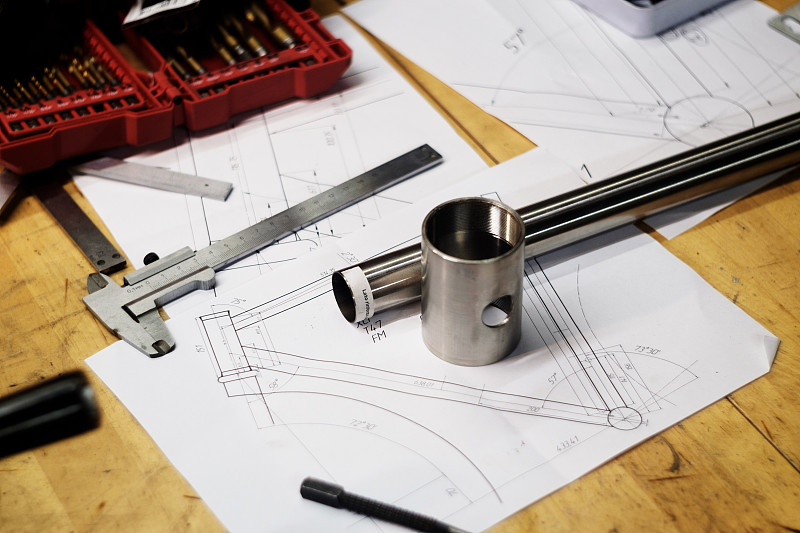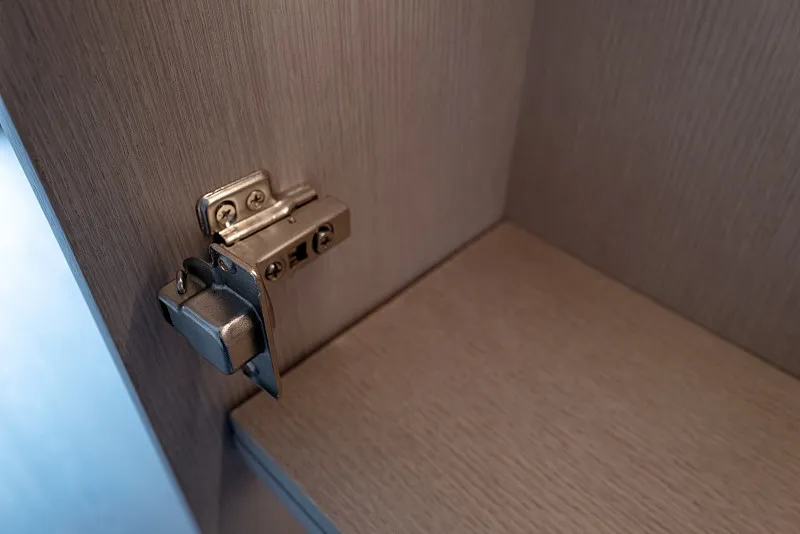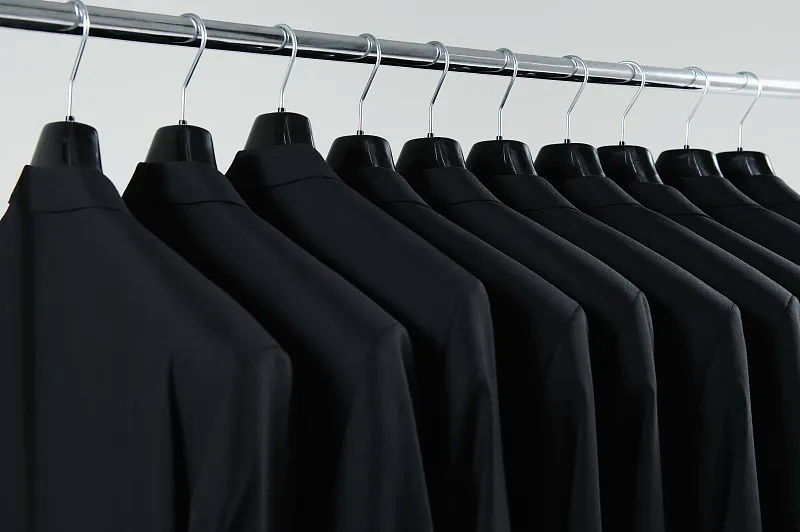The Secret to Long-lasting Furniture: Choosing the Right Hardware

The Ultimate Guide to Choosing Furniture Hardware for Enduring Quality and Style
Though small in size, hardware accessory carry the essence of furniture. They are pivotal to the furniture’s lifespan and daily user experience. How do you select the right hardware to ensure both durability and aesthetics for your furniture? Today, let’s delve into the art of choosing hardware for your custom furniture.
Handles: Types and Selection
By Material:
- Solid Copper Handles: Hard in texture, with a vintage style, but prone to fading.
- Aluminum Alloy Handles: Good plasticity, low density, lightweight, suitable for long and top-to-bottom handles.
- Zinc Alloy Handles: High hardness, great tensile strength, but not suitable for very long handles.
By Style:
- Mill Slot Style: Many models and designs, strong sense of design, requires painted or molded door panels.
- Grooved Style: Grooves on the cabinet door with metal accessories, available in various colors and shapes.
- External Pull Style: Choose simple styles that harmonize with the cabinet.
- Rebound Device: Allows cabinets to open automatically with pressure, requiring high-quality devices to prevent easy damage.
- Beveled Style: Cabinet door panel beveled at a 45° angle, leaving a 2-3cm gap for pulling the door, but proper edge sealing is necessary.

Hinges: Fixing Methods
- Full Cover: For unit cabinets.
- Half Cover: For two door panels sharing one side panel.
- No Cover: For inset door panels.
Hinges, also known as “butt hinges,” are responsible for connecting the cabinet body and door panels.
Material Choice: Stainless Steel or Aluminum Alloy?
The material of hardware directly affects its corrosion resistance and load-bearing capacity. Stainless steel hardware, with its high strength and corrosion resistance, is ideal for humid environments like kitchens and bathrooms. Aluminum alloy hardware, with its light weight and easy processing, is suitable for various furniture decorations and uses.

Gas Supports: Functional Division
- Regular Gas Supports: Provide elastic support, commonly used for lift-up doors and storage beds, relatively inexpensive.
- Random Stop Gas Supports: Can be flipped to the exact angle, preventing head bumps and unreachable heights.
Used in lift-up cabinet doors and tatami, can be paired with non-damped hinges.
Color Harmony: Coordinate with Furniture and Decor Style
Hardware colors should coordinate with furniture and overall decor style. Choosing hardware that matches the color of furniture and floors maintains the unity of the design, integrating furniture and hardware for a harmonious visual effect.
Functional Considerations: Choose Hardware Based on Needs
Different furniture requires different hardware. For example, wardrobe drawer tracks need to carry heavy clothes, so choose tracks with strong load capacity and smooth sliding. Door handles should consider door thickness and ease of use for convenient door opening and closing.

Slides: Common Types
By Installation Position:
- Under-mount Slides: Hidden below, aesthetic, strong load-bearing, not prone to dust, but inconvenient for maintenance.
- Three-section Side Slides: Can pull the drawer all the way out, can be paired with damped side slides in wardrobes; mainstream steel ball slides, also known as ball-bearing slides; smooth performance, excellent performance; slides are on the side, easy to get dirty with lubricating oil, may not be lubricated over time.
- Two-section Slides: Can pull the drawer out about 3/4.
- Horseback Slides: An evolved version of under-mount, with an additional glass/metal side panel, suitable for kitchen spaces.
By Sliding Method:
- Steel Ball Style: Smooth sliding, easy installation, durable.
- Roller Style: Poor load-bearing, no rebound or backstop function, used for computer keyboard drawers, light drawers, now phased out.

The Importance of Hinges: The Heart of Cabinet Doors
Hinges are key to the lifespan of cabinets. Choose stainless steel hinges, preferably with a nickel-plated surface, for corrosion resistance and high strength. Pair with dampers to prevent冲击, ensure quiet operation, and extend the life of hinges.
Slide Selection: The Soul of Drawers
Slides are an essential part of drawers. Side three-section slides are suitable for wardrobe drawers, under-mount tracks have better load-bearing but take up space, horseback slides have the best load-bearing, suitable for cabinets. Choosing the right slide can make your drawers smoother and enhance the user experience.
Basket Selection: Functional Division
- Wardrobe Baskets: Increase storage space, suitable for jewelry, pants, skirts, clothes, and bedding storage, easy to push and pull, with a strong texture.
- Cabinet Baskets:
- Stove Baskets: Upper layer for bowl and plate baskets, chopstick and spoon storage, neat and convenient; lower layer for in common use large kitchen items like woks, soup pots, hot pots, and large seafood plates.
- Lifting Baskets: Most installed on upper cabinets, can move up and down vertically, easy to store and retrieve, with a high safety factor; layered design helps separate dry and wet, efficiently using internal upper space.
- Drawer Baskets: Mostly used in base cabinets and tall cabinets, can utilize deeper spaces.
- Ultra-narrow Baskets: Reasonably use ultra-narrow spaces, generally used as condiment baskets, easy to use, multi-layer grid storage, strong load-bearing.
- High-depth Baskets: Suitable for medium to high cabinet bodies, can store a large number of bagged, canned, and boxed items.
- Corner Baskets: Suitable for 900mm-1000mm corner cabinets, making full use of space.

Handle Design: The Combination of Practicality and Aesthetics
Handles not only facilitate the opening and closing of cabinet doors but are also part of home decoration. You can choose exposed handles or handleless designs. Handleless designs can be achieved through rebound devices or hidden handles, making the furniture look cleaner and more modern.

Rebound Devices and Hidden Handles: Choices for Modern Design
Rebound devices, although attainable handleless design, have a short lifespan and are prone to damage. When considering handleless design, consider hidden handles, such as L-shaped metal profiles or lower door cover designs, which are both aesthetically pleasing and practical.

Clothes Rods: Common Types and Styles
- Fixed, telescopic, anti-slip, solid, and hollow styles.
Clothes rods, also known as hanging rods, are hard, have strong load-bearing capacity, and are used with clothes rod seats.

Pant Racks: Basic Styles
- S-type pant rack – top-mounted, integrated goose-type pant rack, no need to purchase separately, fixed rod spacing, not removable.
- Double-row pant rack – top-mounted, characteristics are the same as the S-type pant rack, easier to take.
- Finished trouser rack – side-mounted, movable and removable, rod spacing can be placed arbitrarily.
- Telescopic trouser rack – top-mounted, requires separate purchase of goose-type rod, convenient for taking, flexible selection of size specifications.
Choose a telescopic track + goose-type pant rack for strong storage capacity and more convenient use; for women’s pants, 25cm, for men’s pants, 29cm pant racks; a 50-length track can generally hold 10-15 pants, and a 55-length can hold 15-20 pants.

Selecting hardware is like choosing the right jewelry for your furniture, considering both practicality and aesthetics. In the process of whole-house customization, do not overlook these small details, as they are often the key to the quality of furniture. Choosing good hardware makes your furniture more durable and beautiful, enhancing your quality of life. Let’s speak with details and win the future with quality in this revolution of home furnishings.
